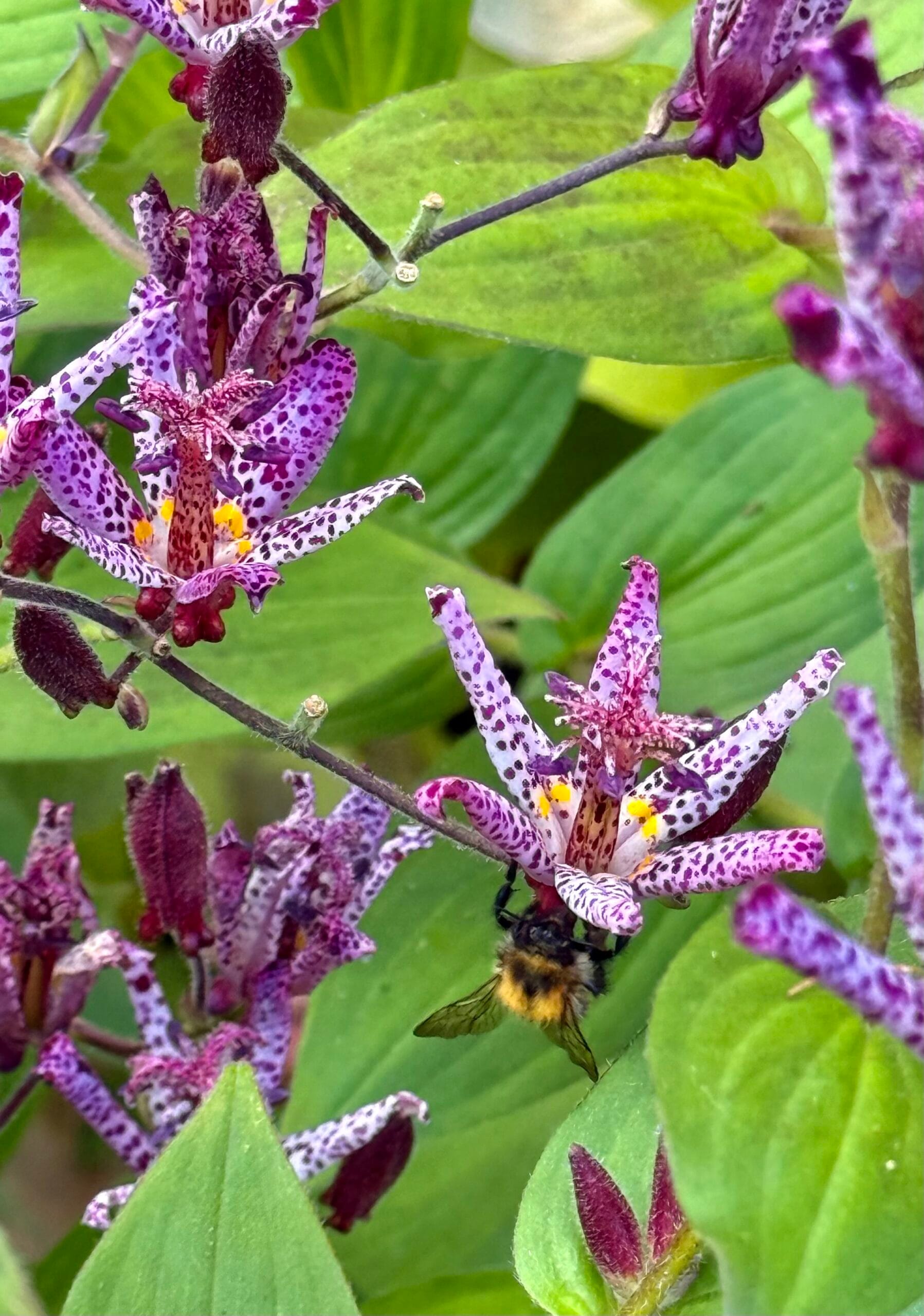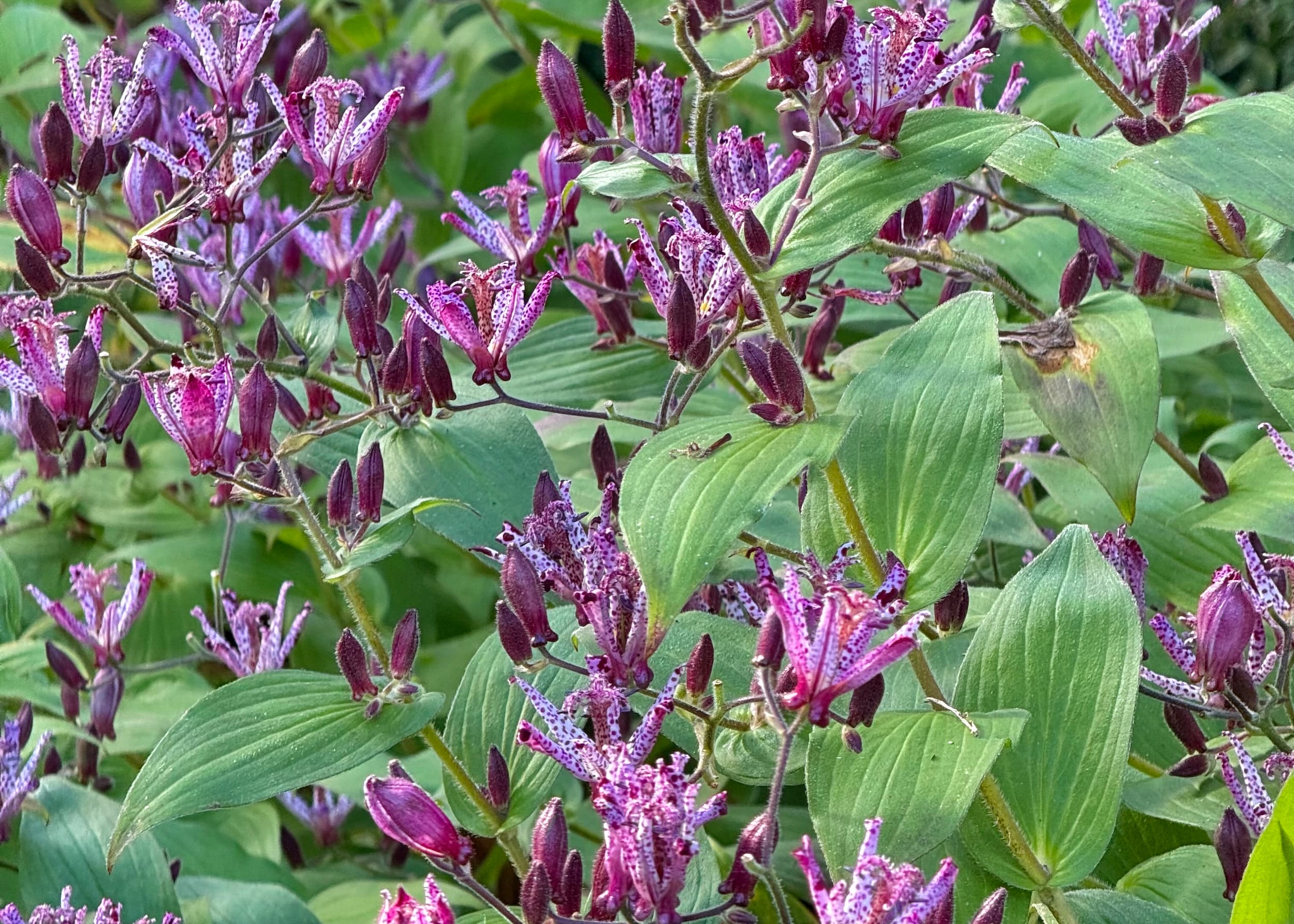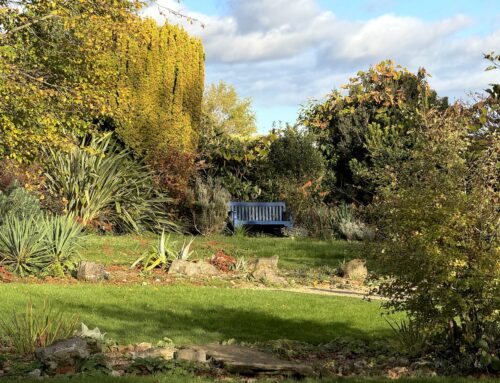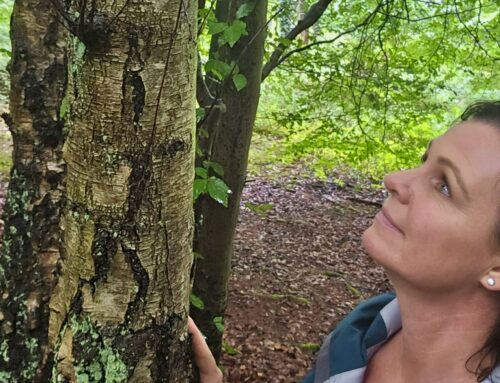I can’t remember where I first saw toad lilies, but I do remember my utter fascination with their exotic flowers which, to my eye, bear a strong resemblance to orchids.

The flowers, which are about 2 cm (1 in) across, grow at the end of the elegant arching stems as though floating magically above the ground. Blooming in late summer through autumn, the flowers are speckled with shades of lavender, purple, and soft white. They are comprised of three parts arranged in an exotic configuration that truly reminds one of a delicate orchid. The buds are similarly coloured and are just as beautiful, while the foliage is deeply veined.
All parts of the plant are hairy, and it is from this characteristic and the configuration of its flowers that this perennial derives its name. The genus name, Tricyrtis, refers to three (‘tri’) for the three parts of the flower, and ‘cyrtus’ from the Greek word meaning hump, for the little bump at the base of the flower which contains its nectar. The specific epithet, ‘hirta’ derives from Latin word for hairy. Someone else will have explain the common name, ‘Toad Lily’, however, as it does not in any way resemble a toad.
First introduced to England in the early 1860s by Scottish botanist, Robert Fortune, this species of tricyrtis is native to forests and mountains from the eastern Himalayas to the Philippines and Japan. They prefer to be sheltered from wind and like areas with dappled shade and reliably damp and rich soil, so they are perfect plants for the edges and more open spaces of woodland garden where they combine well with ferns, candelabra primroses, hellebores, and other woodland plants. Growing in clumps 75 cm (30 ins) tall and wide over 2-5 years, they are relatively easy to grow and will tolerate some drought once established. Apparently attractive to rabbits, they seem to be deer resistant.





